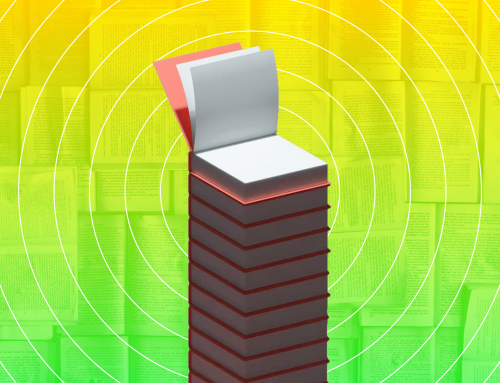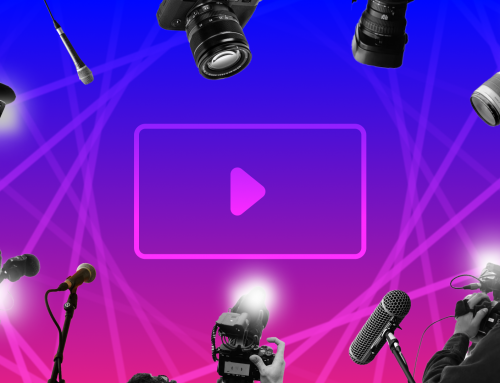Creating a space of trust
Experts agree: Knowing how social media works and about the existence of challenges does not do any good if we cannot engender enough trust in teenagers for them to open up to us about their worries. If we want to gain our children’s trust, it is essential for us to spend quality time with them and carefully choose the right moment to address their concerns. It is best to bring up subjects like e-safety and good online practices in a safe and comfortable environment, such as shared recreational spaces, where the children can talk about their everyday life online without being judged – and where, in exchange, adults can share their own experiences, preventing it from being a lopsided relationship. When kids know that their parents or guardians are open to talking about this and other delicate subjects, it facilitates a trusting dialogue.
That’s why we have to get rid of the taboo that could be associated with the potential danger of the challenges, to talk about them in a natural way and to ask the teens themselves what they think about them. We must bear in mind that we cannot always be there by our children’s side to protect them from dangerous practices (nor would that be advisable), hence the need for them to be capable of critical thinking on their own. If teens have been able to put the challenges into words and think them through rationally in a safe environment, the experience may well stick with them and, when the time comes, help them discern whether or not a particular challenge is worth facing.
At the same time, when you talk to your children about the different types of viral challenges on the internet, experts recommend not explicitly mentioning or going into too much detail about the dangerous ones. It could end up being counterproductive: if you explain all the details of a particular challenge to your kids and then tell them not to look for it, you are likely to achieve the opposite effect, as you have just fuelled their curiosity. And teens cite curiosity as the main reason for performing a challenge.
A report published in the Spanish newspaper El Pais (Spanish only) about the Blue Whale Challenge, an online “quiz game” that encouraged children to hurt themselves which we have already talked about, revealed that the media boom generated by the challenge, which occurred at the same time as the launch of the TV series 13 Reasons Why, caused the number of Google searches for the challenge to spike despite the fact that, to this day, there is still no proof that the game ever existed. A review of other similar studies concurs that news about suicides can result in adolescents copying some actions depending on the way the media treats them.
*Liliana Arroyo, expert in digital transformation; Javier López Menacho, writer and digital communications and PR specialist; Raquel Martín, teacher at l’Alzina Institute in Barcelona.
your mental health
When I see that there are a lot of risks, I don’t do it (…) that it could be harmful to your life.
Because you can say any silly thing or you could participate in some challenge and
everybody tells you something and it affects your mental state”. Albert, age 15
Get to know your children’s reality
Impulsive behaviour and low risk perception among adolescents is shaped by the fact that their prefrontal cortex, an area of the brain associated with behaviour, is still not fully developed. Furthermore, teens are eager to enter the adult world in response to the pain caused by the loss of childhood. In addition to those factors, there are also social phenomena, such as peer pressure or the sense of belonging after completing a difficult task, that lay the groundwork for an explosive phase.
Now, if we add the phenomenon of social media to this traditional definition of adolescence, which has brought social interaction – and, with it, the building of self-esteem – into a virtual sphere, the viral nature of the online challenges is self-explanatory. López Menacho calls it “the dictatorship of the like”, but we can also understand it as an easy way to get approval from others and establish oneself as an adult (the rule being that those who complete the challenge are adults and those who do not are not). On top of that, teens also have an opportunity to play an active role in a community and to interact with their online idols (YouTubers, influencers), who are sometimes the same people promoting the challenges. In other words, these challenges take the concept of social interaction promoted by social media to the extreme.
Writer and digital communications and PR specialist Javier López Menacho recommends that, within this digital context, “in the same way as we are interested in knowing about the friendships and groups of people our children associate with, we should make an effort to get to know their viral reality”, i.e. the groups they follow, their social media contacts, their online concerns. In the new paradigm created by social media, it is just as important to know about teenagers’ viral reality as it is to know about their social reality. And we must remind ourselves that we should not try to find out or control everything: a desire that is both impossible and unwise.
After all, the idea of asserting oneself has been around for ages. The only thing that has changed is the context: one shaped by a technological reality that makes the drive chain much quicker and more appealing. So while challenges themselves are nothing new (admit it: how many times did you utter the words “I dare you to…” in your childhood?), the speed with which they are shared and the size of the audience they reach have multiplied in the digital era.
don’t know if it’s going to affect us, you want to do it because you feel like it, even if you
know it’s dangerous. Sometimes curiosity can kill”. Nino, age 15
Help assess the challenge
There are many different types of viral challenges, and the word “challenge” itself shouldn’t automatically make us go on red alert or cringe in disgust. Admittedly, there have been cases of children who have died as a result of viral challenges, and the actions encouraged by some challenges can have legal consequences. But there are also many initiatives dedicated to acts of solidarity (e.g. the Ice Bucket Challenge) or to raising social and environmental awareness (e.g. the Trashtag Challenge), as well as myriad other harmless challenges that, say, require people to perform dances or other actions (e.g. the Mannequin Challenge or the Bottle Flip Challenge). So no: not all challenges promote violence or risk-taking.
Still, you should avoid trying to teach your kids by instilling fear in them or simply raising awareness of bad practices without explaining the opportunities that a service or action might offer. Rather, experts* recommend showing them the whole picture – one that includes the potential dangers as well as the possibilities involved. In the process, we can establish a code of good practices to which the teens can refer on their own later.
Sharing harmless challenges and asking your kids about the steps required to complete them will force them to ask the question “What is this challenge asking me to do?”. The question thus becomes more meaningful, and asking it can turn into a habit that prepares them for when, further down the road, they are on their own and faced with the decision of whether to take part in a challenge or not. Breaking down the steps of the challenge one by one creates an opportunity to identify any hidden risks or consequences – both physical and legal – and assess whether the challenge is worth doing or not.
One example of a seemingly harmless yet potentially dangerous challenge is the Stand Up Challenge, in which one person, lying face-down on the ground, has to try to stand up while another person, standing upright on the first person’s back, has to stay balanced by jumping incrementally up to the first person’s shoulders only to jump off them like a diving board. But, when you break down each of the challenge’s steps, you get a pretty clear sense of the dangers involved for both people: i.e. the possibility of a bad fall that would cause cervical or spinal injuries.
*Liliana Arroyo, expert in digital transformation; Javier López Menacho, writer and digital communications and PR specialist; Raquel Martín, teacher at l’Alzina Institute in Barcelona.
Identify peer pressure
Peers play a fundamental role in the social and emotional development of adolescents: they can help each other develop new skills or encourage participation in different activities. Although they are often a positive force, peers can also have a negative influence and get others involved in dangerous behaviours, such as the imprudent challenges we have discussed here.
Again, this situation is magnified with the onset of social media. A situation in which a teen’s peers have performed a challenge and shared it on social media, and in which her online idol has done the same, will intensify the pressure in the online world as well. And if there is a situation in which nobody has dared to do a particular challenge yet, the dictatorship of the like Javier López Menacho speaks of can provide a quick way to generate social recognition to the first person to complete it.
This is yet another reason why it is important to foster open communication. You have to be able to explain to your child that it is normal for him to feel pressure when his friends have done something that he is not sure he wants to do, and remind him that, in the real world, challenges and feelings of satisfaction are not about daring to do something dangerous or not, but actually something else; and that he, as an individual, is worthy and should not put himself at risk or go beyond the limits he deems reasonable.
The students surveyed for this guide agreed that health and safety – both their own and others’ – were what ultimately informed their decision to carry out an action or not. Teenagers want at all costs to be recognised as adults capable of making their own decisions, which is why asking “What is important to you?” can be a great way to empower them and instil in them a sense of shared responsibility, and also to remind them of their self-imposed limits.
Educate yourself
Older generations experienced the shift to digital from a relative distance (Spanish only): that world simply became part of their life. As a result, many parents do not have – or are even familiar with – the tools to access this online reality, and so, the context in which the challenges develop and go viral – which is in itself highly complex – is foreign to them. That said, while it is worth educating yourself, i.e. familiarising yourself with and understanding the realities in which your child finds herself, we must not forget that the worst breach that can occur is the one of trust and communication. Experts agree that parents’ knowledge of the online world does not do any good if there is no safe space or trusting relationship with the teenager which would allow for potential dangers to be addressed.
You can also educate yourself along with the teenagers, asking them which challenges they know, which ones they have done and which ones they would not do. In their desire to feel grown up, recognising that they know more about a particular subject might give them a greater sense of satisfaction to share what they know. Asking them about their friends can also be a good strategy since sometimes teenagers are more willing to talk about others than they are about themselves.
There are also several websites – e.g. Pantallas Amigas (Spanish only) – that offer guides explaining how the platforms that are most popular among adolescents work in order to get to know the teens’ online reality better.
*Liliana Arroyo, expert in digital transformation; Javier López Menacho, writer and digital communications and PR specialist; Raquel Martín, teacher at l’Alzina Institute in Barcelona.
things that would go wrong if they did it”. Nino, age 15
Guides for teachers
There are challenges… and then there are challenges
The internet offers a world of possibilities: infinite information at your fingertips, the ability to instantaneously connect with people thousands of kilometres away, the possibility of making yourself known on all over the globe… Of course, just like everything else, the internet brings dangers and risks along with it. That does not, however, mean we should not be familiar with it, and work with and use it in schools.
Like the internet, the challenges themselves are not intrinsically bad. They come in many shapes and sizes.
Experts* recommend showing them the whole picture, highlighting good practices to use in order to avoid falling into the dangers of the challenges, and empowering the kids to make their own decisions and take responsibility for them.
That said, try to stay up to date on the latest viral challenges: both ones with a positive impact and ones that are potentially dangerous. The teens themselves can tell you about the most popular ones, and websites like Wikipedia have updatable lists that compile the most popular ones from the past several years.
*Liliana Arroyo, expert in digital transformation; Javier López Menacho, writer and digital communications and PR specialist; Raquel Martín, teacher at l’Alzina Institute in Barcelona.
Establishing a trusting relationship
“Teachers are teenagers’ number-one influencers”, states Javier López Menacho, writer and digital communications and PR specialist. They spend the most time with teens and have a more direct connection with them. In other words, teachers have a great ability to influence their students. It is therefore important to establish a trusting relationship with them, as doing so will allow them to feel comfortable talking about their concerns and experiences online, in private if necessary, which can serve a basis for identifying – and remedying – possible issues.
These sorts of safe environments are important – because when teens performs dangerous challenges, it could actually be a way of obscuring a broader issue, such as the ones mentioned by Raquel Martín, a teacher at l’Alzina Institute in Barcelona: their relationship with their family; not feeling good about themselves; the need to belong, to feel valued, to not be rejected by their environment… phenomena like peer pressure or seeking recognition and attention from peers.
again. If people are warning you and you keep on doing it, when something happens to you
it’ll be too late. That’s when you’ll stop doing it. I think people really like to go against the
rules. If we’re not allowed to do it, we’re going to want to do it more. We are rebels. The forbidden is very tempting”. Nino, age 15
Incorporate challenges into the classroom
“You could talk about economics by debating the controversy of Spanish influencers living in Andorra (TN: a small country bordering Spain with very low tax rates) or introduce World War II by using maps from the game Call of Duty”, explains Liliana Arroyo, an expert in digital transformation. By incorporating the influencers followed by the children into lessons, you can cover academic topics by way of examples they can relate to. Doing so can also open up the debate about the opportunities and dangers presented by the internet and the online world.
“Influencers are mirrors”, Arroyo says, in the sense that they say more about the teenagers who follow them than about the content creators themselves. Therefore, straight-out judging and invalidating an influencer would be judging and invalidating the teenager who follows him; by contrast, using the content creator as an example to spark debate in class is a practice that allows teens to draw their own conclusions in a safe environment where they do not have to worry about being judged.
Likewise, bringing challenges into the classroom is another valid option. Up to now it has produced very good results (Spanish only), as has been demonstrated, for example, by the Misión Alba project, which is already in its fourth year and finished the last school year with more than 10,000 participants. Challenge-based education is a way of approaching course content in which the teacher aims to explore its application in the real world. By explaining a situation the students can identify with, you are opening up a space for debate and a number of questions that have to be answered using the technology available in the classroom.
These are ways to actively use digital technologies in the classroom while creating a safe space where students can talk about the internet and clear up whatever questions they have about it without feeling judged.
Empower teenagers
The digital environment, with social media as its banner, has multiplied the speed with which challenges are shared and the size of the audience they reach.
In this context and given that today’s teenagers are exposed to a greater number of stimuli than they would have been some years ago, it becomes even more important to exploit teenagers’ sense of responsibility. Adolescents – whose strongest desire is to be treated like adults – must be able make their own decisions and take responsibility for them, but they must do so in full awareness of the consequences of their actions. It is important to establish the fact that actions taken online can have real-life consequences.
On the other hand, the children surveyed for this guide were clear about the fact that, ultimately, their own well-being and the well-being of those around them was their limit when it came to deciding whether to participate in a challenge or not. This self-imposed limit has to take precedence over peer pressure and the sense of belonging to a community that comes from using social media, which is why stressing yet again that their opinion as an adult is perfectly valid will help them maintain these stable limits.
If we help teens understand that their decisions and opinions are valid in themselves, regardless of other people’s opinions, and that their actions can have consequences, we are empowering them to take responsibility for their own decisions.
loop and when you get home, your mother already knows. And everybody else knows too”. Julen, age 15
Maintain regular communication with parents
Parents or guardians have to know about the online reality in which their children find themselves and how to deal with it. That’s why you should be keeping them informed about popular practices that have been observed at the school, making sure to verify and check the accuracy of the information beforehand, and to avoid explicitly mentioning the names of the challenges and request that they do the same.
The best thing to do is focus on practical tips and training tools for parents or guardians: try to talk about the concept of challenges in general terms and be sure to include both positive and negative practices; give them tips about how to create spaces that strengthen a trusting relationship between them and their children; and recommend that they think critically about content from the internet.
Tips for students
Know your limits
Challenges come in many shapes and sizes. They might ask you to imitate a dance, or stay perfectly still, or dump a bucket full of ice water over your head… in the past few years challenges have become very popular on social media platforms such as YouTube, TikTok or Instagram. However, in addition to the fun, harmless or do-gooder kinds of challenges mentioned above, there are also dangerous challenges – ones that can put your physical health at risk or have legal consequences. When you are confronted with these challenges – or with the fact that some of your friends have already completed them – it is normal to feel the urge to perform some of them as well. But, before you do, ask yourself: “What is the most important thing to me?”
If you find yourself in a situation where you are not sure whether you want to take part in a viral challenge or not, you need to know your limits. All the teens surveyed for this guide were clear about the fact that their limit was their physical well-being (as well as the physical well-being of the others who could be affected by the challenge): in other words, they would not under any circumstances carry out a challenge that posed a danger to their own or someone else’s physical safety.
Yet, while some of these practices can be clearly and easily identified as dangerous, the risk is not so obvious in other cases. Before making your decision, break down the steps of the challenges: think about what you will need to do for each step and identify any dangers a step might entail. If any single step requires you to go past your limit, remember that your opinion is perfectly valid and takes precedence over your friends’ opinion.
Still have doubts? That’s normal!
Challenges are eye-catching, and when they go viral, it is easy to let yourself be influenced by them and want to complete them at all costs. Which is why it is so important to take a step back before doing it and think about the limits you don’t want to go past. However, even with those limits in mind, it is normal to have doubts in the face of the stimuli surrounding the challenge in question.
Translating your doubts into words and communicating them to people you can trust can help you make the decision to take part in the challenge or not. The people you trust might be a parent, a teacher, a friend… And even if you have a good relationship with all of them, you might still feel uncomfortable talking with them about the subject in question. Identify the people with whom you can share and talk about your doubts.
You’re in charge
Sometimes challenges are tempting because they offer a way to gain immediate social recognition, i.e. likes. Or because the majority of your friends have done it. Or because your favourite influencer is encouraging you to do it… there are thousands of reasons to do them. All of these factors, this peer pressure, are pushing you to act impulsively. It is at these moments when you need to remember that you, as an individual, are capable of making your own decisions and that your opinion is perfectly valid.
Experts* recommend not losing perspective of the fact that performing viral challenges only has an effect in your online reality, i.e. the reality that plays out on the internet. In physical reality, the challenges are different and could, in fact, even be put at risk by some of the online challenges, which can have consequences in the future. Keep that in mind and put your online idols into perspective: Are they the ones promoting dangerous activities that make no positive contribution to the real world or are the ones living a healthy life?
*Liliana Arroyo, expert in digital transformation; Javier López Menacho, writer and digital communications and PR specialist; Raquel Martín, teacher at l’Alzina Institute in Barcelona.
anything up because at this age we go around totally drunk and when you do something
harmful to yourself you don’t realise it”. Nino, age 15
Help your friends and beyond the challenges
Just as it is wise to ask for help when you are doubting about whether to take a risk or not, to perform a challenge or not, you should be there for your friends when they find themselves at a similar crossroads. Providing support to your friends when they need and ask for it is important: you can ask them questions that help them identify the risks of the challenge in question, and suggest that they talk to adults they trust, such as their parents, if they have the right kind of relationship with them, or a teacher with whom they have a good rapport.
However, asking for help is not always easy. Or it could be that a friend has not picked up on the danger hidden behind a seemingly harmless practice. If you notice that one of your classmates is behaving in a potentially dangerous way, do not hesitate to let them know.
Completing challenges is one way of gaining recognition from your classmates and friends. In the online world, the likes we get for completing a challenge give us satisfaction and generate the desire for more. However, the real world is very different from the one on social media. The challenges we must face in our daily life in physical reality are something very different from the viral world.
Letting yourself be consumed by this online reality can be harmful and has, in some cases, led to an addiction to digital technologies (Catalan only). On top of that, social media can have particularly adverse effects: an investigative reporting series by The Wall Street Journal called “The Facebook Files” reviewed internal Facebook documents and revealed that Instagram is a toxic network for adolescents, and that the company itself has been fully aware of that fact for some time.







